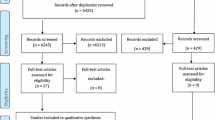Abstract
The presence of residual antibiotics in tissue allografts after decontamination with antibiotic cocktails may result in widely documented adverse effects in predisposed subjects. Moreover, antibiotic residues may mask contaminating microorganisms, resulting in falsely negative sterility tests, with potential risk of post-surgical infections. The objective of the present study was to define a rinsing procedure capable of eliminating antibiotic residues from cardiovascular, bone and skin tissues after decontamination with BASE.128. Different washing patterns, employing BASE medium, were applied. The presence of antibiotic residues in tissue homogenates was assessed by agar diffusion test at different stages of tissue processing. To test whether antibiotic residues can result in falsely negative microbiological analysis, we induced a superficial tissue contamination with known inoculum concentration. By employing four different porcine tissues, we here report direct evidence that the presence of even limited amounts of antibiotics in decontaminated tissues interferes with sterility testing. This has implications in terms of increased risk of infections in allograft recipients. To minimize this risk, we developed a procedure for extensive removal of antibiotics from allografts, allowing for subsequent detection of microbial contaminations that may occur during transportation, storage or processing prior to allograft transplantation. Our study emphasizes the importance of validating all processes and analytical methods in tissue banking, in order to warrant tissue safety. This will minimize the risks of post-surgical infections as well as antibiotic-induced anaphylaxis in predisposed patients.


Similar content being viewed by others
References
Charfeddine K, Zaghden S, Kharrat M, Kamoun K, Jarraya F, Hachicha J (2005) Infectious complications in kidney transplant recipients: a single-center experience. Transplant Proc 37:2823–2825
Connolly M, McAdoo J, Bourke JF (2007) Gentamicin-induced anaphylaxis. Ir J Med Sci 176:317–318
Eastlund T (2006) Bacterial infection transmitted by human tissue allograft transplantation. Cell Tissue Bank 7:147–166
Germain M, Thibault L, Jacques A, Tremblay J, Bourgeois R (2010) Heart valve allograft decontamination with antibiotics: impact of the temperature of incubation on efficacy. Cell Tissue Bank 11:197–204
Kupstaite R, Baranauskaite A, Pileckyte M, Sveikata A, Kadusevicius E, Muckiene G (2010) Severe vancomycin-induced anaphylactic reaction. Medicina (Kaunas) 46:30–33
Leeming JP, Lovering AM, Hunt CJ (2005) Residual antibiotics in allograft heart valve tissue samples following antibiotic disinfection. J Hosp Infect 60:231–234
Mallick TK, Mosquera A, Zinderman CE, Martin LS, Wise RP (2011) Reported infections after human tissue transplantation before and after new food and drug administration (FDA) regulations, United States, 2001 through June, 2010. Cell Tissue Bank
Mennicke M, Zawodniak A, Keller M, Wilkens L, Yawalkar N, Stickel F, Keogh A, Inderbitzin D, Candinas D, Pichler WJ (2009) Fulminant liver failure after vancomycin in a sulfasalazine-induced DRESS syndrome: fatal recurrence after liver transplantation. Am J Transplant 9:2197–2202
Mertes PM, Tajima K, Regnier-Kimmoun MA, Lambert M, Iohom G, Guéant-Rodriguez RM, Malinovsky JM (2010) Perioperative anaphylaxis. Med Clin North Am 94:761–789
Ning BT, Zhang CM, Lin R, Tang YM (2010) Successful rescue of a child with severe anaphylactic shock by extracorporeal membrane oxygenation. HK J Paediatr 15:238–242
Thong BY (2010) Update on the management of antibiotic allergy. Allergy Asthma Immunol Res 2:77–86
Conflict of interest
The authors are employed by the Research and Development Department of AL.CHI.MI.A. S.r.l, the company that manufactures the medical devices discussed in this paper.
Author information
Authors and Affiliations
Corresponding author
Rights and permissions
About this article
Cite this article
Gatto, C., Giurgola, L. & D’Amato Tothova, J. A suitable and efficient procedure for the removal of decontaminating antibiotics from tissue allografts. Cell Tissue Bank 14, 107–115 (2013). https://doi.org/10.1007/s10561-012-9305-5
Received:
Accepted:
Published:
Issue Date:
DOI: https://doi.org/10.1007/s10561-012-9305-5




